Discoteuthis discus
Richard E. YoungIntroduction
Discoteuthis discus is most easily separated from its congeners by the arrangement of photophores and the form of the funnel locking-apparatus.
Brief diagnosis:
A Discoteuthis ...
- with a diagonal groove in the funnel locking-apparatus.
- with a photophore at the ventral tip of the mantle.
 Click on an image to view larger version & data in a new window
Click on an image to view larger version & data in a new window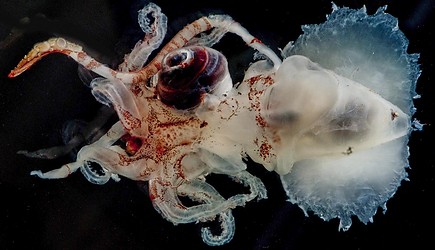
Figure. Ventral view of D. discus, xx mm ML, Gulf of Mexico. Badly damaged trawl-captured squid. Note the general proportions and the fragile structure of the arms.. Photograph by Danté Fenolio.
Characteristics
- Arms
- Arms weak, approximately subequal and 60-85% of ML.
- Large arm suckers with few low, broad, rounded teeth mostly on distal margin.
- Tentacles
- Dactylus with suckers in four series throughout.
- Medial suckers on manus of club globular relative to D. laciniosa (inner ring height ca 60% of diameter compared to 35% of diameter).
 Click on an image to view larger version & data in a new window
Click on an image to view larger version & data in a new window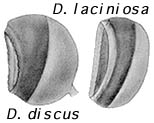
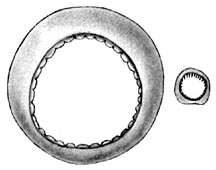
Figure. Left - Side views of large manus suckers from D. discus (45 mm ML) and D. laciniosa (56 mm ML, paratype). Right - Oral views of a large sucker from manus and a much smaller sucker from the dactylus of D. discus, 45 mm ML, showing dentition. Drawings from Young and Roper (1969).
- Largest club suckers with numerous low, flattened or rounded teeth around entire inner ring.
 Click on an image to view larger version & data in a new window
Click on an image to view larger version & data in a new window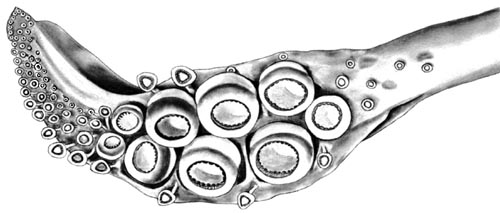
Figure. Oral view of the tentacular club of D. discus. TOP - 53 mm ML, holotype. Drawing from Young and Roper (1969). BOTTOM - XX mm ML. Photograph by Danté Fenolio.
- Head
- Beaks: Descriptions can be found here: Lower beak; upper beak.
- Beaks: Descriptions can be found here: Lower beak; upper beak.
- Funnel
- Locking-apparatus with diagonally positioned groove.
- Mantle
- Free anterior margin of mantle smooth (i.e., flaps lacking).
- Free anterior margin of mantle smooth (i.e., flaps lacking).
- Photophores
- At least 4 organs on margin of eyelid.
- One dark, round organ on ventral surface near posterior tip of mantle.
- Gladius
- Conus absent.
Life History
The smallest known D. discus is 16 mm ML (Young and Roper, 1969). At this size, the fins are about 60% of the ML and reach 98% of the ML in squid of 45 mm ML. Mature individuals are not known.
Distribution
The type locality is off Ghana, West Africa (03 deg 50'M. 02 deg 37'W) in the tropical East Atlantic. This species is known from the tropical and subtropical Atlantic and the central North Pacific (M. Seki, pers. comm.).
References
Young, R. E. and C. F. E. Roper. 1969. A monograph of the Cephalopoda of the North Atlantic: The family Cycloteuthidae. Smithsonian Contributions to Zoology No. 5:1-24.
Title Illustrations

| Scientific Name | Discoteuthis discus |
|---|---|
| Location | Off West Africa, 4°N, 3°W |
| Reference | from Young, R. E. and C. F. E. Roper. 1969. A monograph of the Cephalopoda of the North Atlantic: The family Cycloteuthidae. Smithsonian Contributions to Zoology No. 5:1-24. |
| View | Ventral |
| Size | 53 mm ML |
| Type | holotype |
| Image Use |
 This media file is licensed under the Creative Commons Attribution-NonCommercial License - Version 3.0. This media file is licensed under the Creative Commons Attribution-NonCommercial License - Version 3.0.
|
| Copyright |
©

|
About This Page

University of Hawaii, Honolulu, HI, USA
Page copyright © 2015
 Page: Tree of Life
Discoteuthis discus .
Authored by
Richard E. Young.
The TEXT of this page is licensed under the
Creative Commons Attribution-NonCommercial License - Version 3.0. Note that images and other media
featured on this page are each governed by their own license, and they may or may not be available
for reuse. Click on an image or a media link to access the media data window, which provides the
relevant licensing information. For the general terms and conditions of ToL material reuse and
redistribution, please see the Tree of Life Copyright
Policies.
Page: Tree of Life
Discoteuthis discus .
Authored by
Richard E. Young.
The TEXT of this page is licensed under the
Creative Commons Attribution-NonCommercial License - Version 3.0. Note that images and other media
featured on this page are each governed by their own license, and they may or may not be available
for reuse. Click on an image or a media link to access the media data window, which provides the
relevant licensing information. For the general terms and conditions of ToL material reuse and
redistribution, please see the Tree of Life Copyright
Policies.
- Content changed 26 March 2019
Citing this page:
Young, Richard E. 2019. Discoteuthis discus . Version 26 March 2019 (under construction). http://tolweb.org/Discoteuthis_discus/19625/2019.03.26 in The Tree of Life Web Project, http://tolweb.org/




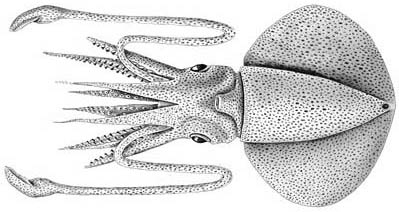








 Go to quick links
Go to quick search
Go to navigation for this section of the ToL site
Go to detailed links for the ToL site
Go to quick links
Go to quick search
Go to navigation for this section of the ToL site
Go to detailed links for the ToL site